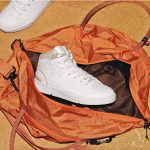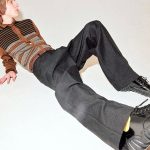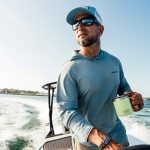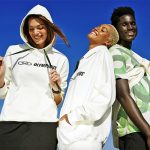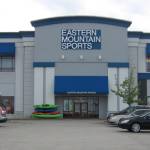Deckers Brands, home to the Hoka, Ugg, Teva, Koolaburra and Sanuk brands, had a strong start to fiscal year 2025, with Hoka again leading the way. The quarterly conference call was a bit active as company President and CEO Dave Powers signed off on his last call with analysts before retiring at the end of the month.
“I am confident that the Deckers team has laid the groundwork to deliver another year of excellent results
The Hoka train shows no signs of slowing down,” Powers offered.
The company also announced that it had entered into a deal to sell the Sanuk brand, a move that was expected after it was first designated for divesture last year.
Hoka
Hoka brand sales reached $545.2 million in fiscal Q1, compared to $420.5 million in the year-ago Q1 period. The strength came despite investor concerns over sell-throughs slowing across the running footwear space.
Deckers Brands reported that accelerated DTC (direct-to-consumer) growth as well as continued strong wholesale gains helped drive a 29.7 percent jump in Hoka’s sales in its fiscal first quarter ended June 30. Coupled with strong full-price selling for both Hoka and Ugg, Deckers’ earnings in the period arrived well ahead of analysts’ targets, prompting the company to boost its EPS guidance for the year.
Hoka’s DTC sales grew 33 percent in fiscal Q1, accelerating from a 21 percent gain in the fiscal fourth quarter. DTC represented 38.9 percent of sales in the quarter, up from 37.9 percent in the year-ago period. Deckers last year set a long-term goal for Hoka’s DTC to represent 50 percent of sales.
“From a DTC perspective, Hoka continues to experience global gains through consumer acquisition and retention with particular strength among retained consumers in the first quarter,” said Powers. “We believe this is a powerful reflection of Hoka consumer loyalty, reinforcing the long runway we see for this brand and the reason we are focused on building the Hoka brand’s awareness while there remain significant opportunity.”
However, Hoka’s wholesale revenue was also strong, increasing 28 percent versus last year. Wholesale growth benefited by adding strategic doors with select partners.
Stefano Caroti, Deckers’ chief commercial officer and on deck CEO, noted that among the newer partners seeing expansion were Dick’s Sporting Goods and JD Sports in the U.S.; Intersport and Foot Locker in Europe, Topsport in China, and Sport Chek in Canada. The wholesale gains also reflect additional shelf space and market share gains at established accounts as Hoka refilled inventory in the channel and continue to see high levels of full-price sell-through.
Caroti said, “Our growth was particularly strong in the U.S. as the brand continues to see earlier demand from wholesale partners and benefited from favorable year-over-year comparisons.”
Regarding product, Powers said core styles like the Clifton and Bondi “continued to experience healthy growth;” emerging franchises like the Mach, Transport and Kawana “drove outsized gains;” and new styles like the Skyward X, Cielo X1 and Skyflow “brought incremental volume and attention to the brand through segmentation and greater innovation.”
Clifton and Bondi, he said, remain the leading franchises for Hoka with franchises model updates increasingly allowing for differentiation at key partners. Growth is also being aided by limited edition lifestyle treatments and collaborations that regularly sell out.
Powers called the Mach 6 launch “a universal success” with the model ranking as a top five revenue style for Hoka in Q1. He said, “We are encouraged by the consumer adoption of the Mach which is skewing younger and driving considerable acquisition in the U.S. and EMEA.”
The Transport and Kawana saw “explosive growth,” in the quarter in Hoka’s DTC channel and with lifestyle athletic partners as both styles landed among Hoka’s top 10 styles ranked by revenue. Powers said, “While the Transport and Kawana were designed as a light hiker and fitness shoe, respectively, the consumer is increasingly adopting them for more casual and versatile wear.”
Finally, Powers said Hoka’s most advanced performance-leading styles, the Cielo X1 and Skyward X, “far outperformed our expectations,” with the styles showcased at the Boston Marathon, Big Sur International Marathon, Hackney Half Marathon in London and the Tokyo Marathon. The Skyward X in particular has been a key focus of Hoka’s marketing efforts.
Powers said, “The success of innovative styles like the Cielo and Skyward is critical to Hoka maintaining its performance roots and emboldens the product team to continue pushing the envelope of our technologies.”
As part of Hoka’s segmentation efforts, the Skyflow is developed as a co-exclusive for DTC and the brand’s run specialty partners. Power said, “We are receiving great feedback from consumers and our retail partners in the early days of this launch.”
Powers also highlighted Hoka’s success in building awareness through its elevated “Fly Human Fly” marketing campaign that’s built around connected TV, out-of-home content, social and earned media and in-person community activations in key cities. Powers said, “All of the elements of the FLY HUMAN FLY campaign are aimed at deepening connections with consumers, inspiring brand love and introducing new consumers to Hoka around the world.”
Despite the strong performance, Deckers still expects Hoka’s sales to grow approximately 20 percent for the full fiscal year. Deckers’ officials noted that comparisons become more challenging over the remaining quarters of the year. Some analysts felt Deckers was being conservative with guidance given the transition to a new CEO.
“Overall, this quarter was an excellent start to the year for Hoka with healthy full-price demand across global markets,” said Powers. “The team is laser-focused on executing the brand strategy to build global brand awareness and market share with an enhanced focus on international markets, expand DTC through consumer acquisition and retention gains and excite consumers with performance innovations.”
Ugg
Ugg sales increased 14.0 percent to $223.0 million in the fiscal first quarter. The gains were primarily driven by wholesale gains as the brand continues to refill certain inventory in the marketplace.
Powers said Ugg’s quarter was marked by strong full price selling of key iconic franchises with increased year-round momentum, increased adoption of the expanded Golden Collection, continued momentum in global DTC and robust wholesale growth in the U.S., reflecting earlier demand.
“We are encouraged by the consumer demand for Ugg in the first quarter as we believe it reflects continued progress and creating year-round excitement for the brand’s versatile and seasonally relevant product,” said Powers. Ugg is still expected to grow in the mid-single-digit range for the year.
Other Brands
- Teva’s sales slid 4.3 percent to $46.3 million.
- Sanuk’s sales decreased 28.4 percent to $6.9 million.
- Deckers said that subsequent to quarter end, it entered into an agreement to divest the Sanuk brand, which is expected to close in August 2024. No further details were given on the buyer. Deckers announced its intentions to divest Sanuk last October.
- Sales of other brands, primarily composed of Koolaburra, climbed 123.5 percent to $4.0 million.
Companywide, sales jumped 22.1 percent to $825.3 million, exceeding analysts’ consensus target of $805.5 million. On a constant currency basis, sales increased 23.0 percent.
By channel, DTC sales advanced 24.0 percent to $310.6 million with comparable sales ahead 21.9 percent. Wholesale sales increased 21.0 percent to $514.8 million. Domestic sales grew 23.0 percent to $515.9 while international net sales increased 20.8 percent to $309.5 million.
Gross margins improved 560 basis points to 56.9 percent. Margins primarily benefited from favorable brand and product mix as both its highest-margin brand, Hoka, as well as higher-margin products within Ugg and Hoka drove a larger proportion of growth, higher levels of full price selling, particularly with the Ugg brand which was more promotional in the prior year first quarter. Deckers also benefited from lower freight rates recognized in this quarter which are anticipated to be a headwind for the remainder of this year.
SG&A expenses rose 22.3 percent to $337.2 million but was about flat as a percent of sales, at 40.9 percent against 40.8 in the year-ago period. SG&A dollar growth compared to last year was driven by investment in key areas of the business in support of growth initiatives which include higher marketing spend, primarily related to expanding global Hoka awareness and investments in talent to support key functions within its growing organization.
Operating income surged 87.8 percent to $132.8 million. Net earnings jumped 81.9 percent to $115.6 million, or $4.52, far ahead of analysts’ consensus estimate of $3.52.
Inventories were up 1.7 percent at the quarter’s end.
Asked by an analyst about the potential for acquisitions with the company’s $1.4 billion cash position, Powers said Deckers is “always looking. We’re always exploring and evaluating opportunities.” However, he added that the company also sees “incredible organic growth with the brands we have for years to come.”
He added, “We want to focus as much as we can on Hoka and Ugg and reactivating Teva. We have category expansion opportunities. We have men’s opportunities in Ugg, apparel opportunity in Hoka over the years. And so I think given valuations out in the marketplace, given the integration challenges that it would cause on our end and potentially taking our eye off the ball, anything sizable is not on the radar right now. We just launched Ahnu. We think that’s got long-term potential.”
The updated outlook calls for:
- Sales are still expected to increase approximately 10 percent to $4.7 billion.
- Gross margin is now expected to be approximately 54 percent (5 percent previously).
- SG&A expenses are now expected to be in the range of 34 percent to 34.5 percent (approximately 34 percent previously).
- Operating margin is now expected to be in the range of 19.5 percent to 20 percent (approximately 19.5 percent previously).
- Effective tax rate is still expected to be in the range of 22 percent to 23 percent.
- EPS is now expected to be in the range of $29.75 to $30.65 ($29.50 to $30.00 previously).
Image courtesy Hoka



